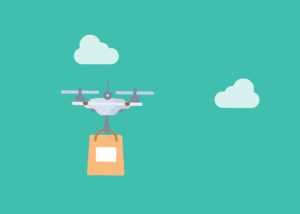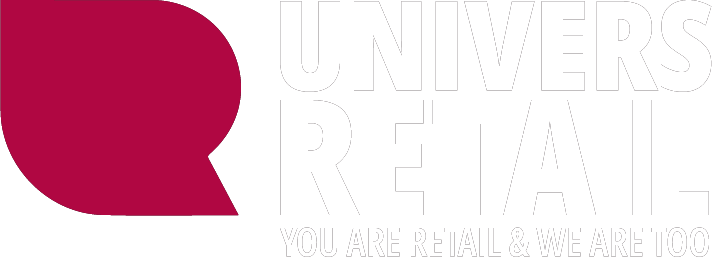[vc_row][vc_column][vc_column_text]
The regulatory constraints that will lead us to zero pollution are becoming stricter every year. Po meet these challenges, several evoluin last-mile delivery are currently taking shape. On include new powertrains, the rise of artificial intelligence, experiments in sharing, or even service solutions solutions.
[/vc_column_text][/vc_column][/vc_row][vc_row][vc_column][vc_custom_heading text=”La livraison du dernier kilomètre, quels enjeux ?” font_container=”tag:h2|text_align:left|color:%23d50950″ use_theme_fonts=”yes”][vc_row_inner equal_height=”yes”][vc_column_inner width=”1/3″ css=”.vc_custom_1682521456666{background-image: url(https://www.universretail.com/wp-content/uploads/2023/04/DernierKilometre_illustration.jpg?id=17901) !important;background-position: center !important;background-repeat: no-repeat !important;background-size: contain !important;}”][/vc_column_inner][vc_column_inner width=”2/3″][vc_column_text]
Last-mile delivery, also known as "last mile logistics", is the final link in the order delivery chain. It involves transporting goods from a store or distribution center to the customer's chosen destination .
The growth of e-commerce in recent years has revolutionized our consumption patterns. The last mile has become a strategic element of logistics, and its implementation has an impact of around 20% on total delivery costs. Its environmental impact is also significant, since it accounts for 30% of greenhouse gases, 40% of fine particle emissions and 50% of diesel consumption in cities.
[/vc_column_text][/vc_column_inner][/vc_row_inner][/vc_column][/vc_row][vc_row][vc_column][vc_column_text]
Beyond its impact, delivery also determines the satisfaction of customers , who are increasingly demanding greater flexibility while taking care to minimize their own carbon impact. In 2021, 80% of e-buyers opted for home delivery, and 53% said they took environmental issues into account when making a purchase. As a general rule, most consumers do not place an order again once they have experienced a delivery problem.
Improving last-mile delivery is therefore a way of reducing costs, improving service quality and, at the same time, enhancing the company's image. Here are 4 major trends we've identified for 2023.
Moving towards zero pollution
 In recent years, more and more regulatory constraints are making their appearance, and we've seen the emergence of the low-emission zones (ZFE) in cities, created to improve air quality and protect the health of city dwellers. In the perimeter of an EPZ, only vehicles with less polluting (according to their Crit'Air sticker certificate) are allowed to circulate.
In recent years, more and more regulatory constraints are making their appearance, and we've seen the emergence of the low-emission zones (ZFE) in cities, created to improve air quality and protect the health of city dwellers. In the perimeter of an EPZ, only vehicles with less polluting (according to their Crit'Air sticker certificate) are allowed to circulate.
The law approved by the European Parliament on February 14, 2023 adds another constraint. It obliges major automakers to eliminate CO2 emissions from new vehicles by 2035. The long-term path has already been mapped out.
New delivery vehicles such as cargo bikes and electric three-wheelers are proving to be an advantage. Delivery drivers are freed from traffic jams and other hazards. Easy, and often free, parking makes them even more efficient in delivering on their customer promise. They also enable zero-carbon, noise-free delivery at lower cost.
Artificial intelligence and data on the rise
In the face of these constraints to reduce greenhouse gas emissions, optimizing delivery routes and organizing their planning intelligently generates savings. The use of artificial intelligence in planning software is a solution for optimizing and improving the performance of complex transport operations.
Increasingly, TMSs are giving way to specialized software to manage the last mile. They optimize loads and the number of kilometers covered to reduce costs and GHG emissions. They also take care of route planning to avoid traffic jams and enable carriers to arrive on time. Thanks to geolocation, they reassure customers by keeping them informed in real time of the progress of their order. Last but not least, they are veritable data libraries, enabling a posteriori analysis. This software creates new distribution solutions in a highly competitive economic context, where regulatory constraints are increasingly present.
[/vc_column_text][/vc_column][/vc_row][vc_row][vc_column][vc_column_text]
Pooling for better optimization
These regulatory constraints are boostingurban logistics andtransforming these areas. Companies are pooling last-mile delivery services.
As a result, more and more urban logistics spaces (ULS) are appearing. These are groups of logistics facilities or activities designed to optimize the movement of goods (transport and storage) in cities, both functionally and environmentally, by providing innovative solutions.
These ELUs make it possible to rationalize delivery routes by centralizing operations and delegating service to a single operator.
Take the example of Lyon's ELU , which serves the peninsula. Since it was commissioned, it has doubled the number of customers delivered each day and increased the number of parcels delivered by 50%, while improving working conditions for delivery drivers. It has also helped reduce environmental impact thanks to shorter, more efficient routes. This in turn has reduced the number of kilometers driven and CO2 emissions, while promoting the use of electric and silent vehicles.
Diversifying service solutions
To avoid closed doors and increase customer satisfaction, it's essential to adapt to the recipient's constraints, by giving them a choice of schedule or proposing new alternatives.
Depending on the case, several methods are available:
- Pedestrian drive-through or click and collect: This method enables consumers to do their shopping online and then collect it from a store's point of collection. It offers greater profitability, while saving customers time and offering a wide range of time slots.
- Point relais: a good alternative to home delivery. The principle is to deliver the parcel to a third-party store close to the home or conveniently accessible to the buyer. This reduces greenhouse gas emissions by reducing the number of carrier stops and the distance covered. It also eliminates the customer's time constraints and increases their satisfaction.
- Automated lockers: this solution is based on the same principle as relay points, but the product is made available to customers via automatic lockers that ensure the parcel's security. Operating costs are reduced, optimizing delivery times and transport, and streamlining exchanges.
- Home" delivery: the customer's groceries are delivered directly to their home. With access to the front door, the delivery driver can store the groceries directly in the refrigerator in the customer's absence. This system avoids closed doors and extends delivery times without blocking the customer at home.
[/vc_column_text][/vc_column][/vc_row][vc_row][vc_column][vc_column_text]
More autonomous delivery in the future?
 In the near future, we are likely to see deliveries by autonomous robot or by drone. A case in point is the eDeliver4U vehicle designed by Valeo in partnership with Chinese meal delivery platform Meituan Dianping. This autonomous vehicle, soon to be tested, is designed to deliver meals in the city. dense urban centers. It has a range of 100km and can deliver 17 meals simultaneously. Another innovation is the DIGIT autonomous biped designed by Agility Robotics. This robot is equipped with arms and legs. It is also equipped with Lidar, cameras and sensors, and can carry a parcel weighing 18 kilos. This robot is designed to replace the delivery person. Ford has already announced its intention to acquire a copy of this robot for testing in conjunction with its autonomous vehicles.
In the near future, we are likely to see deliveries by autonomous robot or by drone. A case in point is the eDeliver4U vehicle designed by Valeo in partnership with Chinese meal delivery platform Meituan Dianping. This autonomous vehicle, soon to be tested, is designed to deliver meals in the city. dense urban centers. It has a range of 100km and can deliver 17 meals simultaneously. Another innovation is the DIGIT autonomous biped designed by Agility Robotics. This robot is equipped with arms and legs. It is also equipped with Lidar, cameras and sensors, and can carry a parcel weighing 18 kilos. This robot is designed to replace the delivery person. Ford has already announced its intention to acquire a copy of this robot for testing in conjunction with its autonomous vehicles.
Connected intercoms and parcel boxes are also the subject of numerous innovative models. Take, for example, Dronedek's drone-accessible parcel box. The lid of the parcel box opens when the drone approaches. The drone then deposits the parcel in the box and returns to its point of origin. In recent months, the United States has seen theemergence of regular drone delivery route authorizations. This gradual liberalization will surely encourage manufacturers to develop new solutions.
[/vc_column_text][/vc_column][/vc_row][vc_row css=”.vc_custom_1682523226414{padding-bottom: 15px !important;background-color: #efefef !important;}”][vc_column][vc_column_text]
Taking last-mile logistics into account
Given the evolution of e-commerce and the challenges facing the supply chain, last-mile logistics is becoming a specialist affair, and ignoring it can leave a company vulnerable.
Want to rethink your last-mile logistics, or just talk about it?
[/vc_column_text][rt_button_style title=”Contactez-nous” link=”url:https%3A%2F%2Fwww.universretail.com%2Fcontact%2F|title:Contact” animation=”fadeInUp”][/vc_column][/vc_row][vc_row][vc_column][vc_column_text]Sources :
Citepa : Guiding Air & Climate action
CAS : CAS registry
Ademe.fr: Agence de la transition écologique[/vc_column_text][/vc_column][/vc_row]

